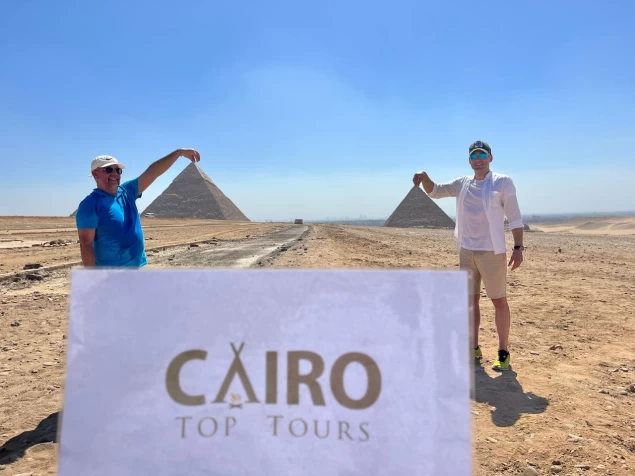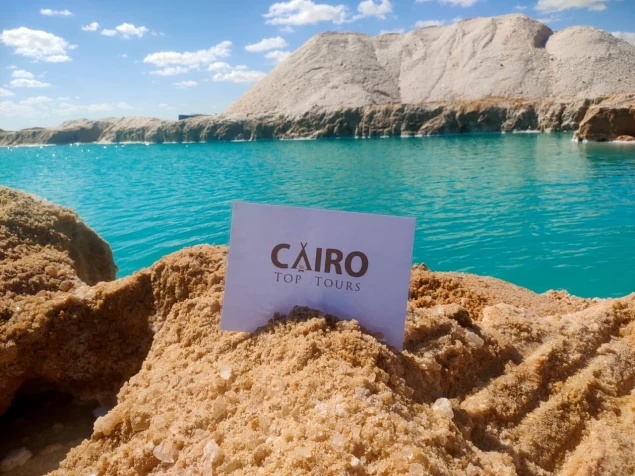 _ ancient Egypt-webp.webp)
History of Ptolemy II (Philadelphus)
Ptolemy II Philadelphus, which means Ptolemy the lover of his brother, 309-308 BC.M.- January 246 BC.M. The second king of the Ptolemaic state, who ruled Egypt from 283 BC. In the year 246 BC.
The greatness of the Ptolemies reached its apogee during the reign of Ptolemy II Alexandria was at the peak of its glory, and he also took care of the Alexandria Museum and library. During his reign, Ptolemy II pursued an aggressive expansionist policy, at some stages of which he succeeded in annexing the Aegean islands and the eastern Mediterranean. Between the years 275-271 BC, Ptolemy II led his armies to fight the Seleucids in the first Syrian War, annexed Cilicia and Caria, but lost Cyrene after losing to his half-brother Magas. And in the kharmonid war between the years 267-261 BC, Ptolemy II confronted the Aetolians for control of the Aegean islands, and suffered several reverses.
Its origin and beginning
Ptolemy II was the son of Ptolemy I by his third wife Berenice I. Ptolemy was educated by a number of the most prominent intellectuals of his time, including Philetas of El Koussi, a poet who is credited with the first literary effort known to Alexandria in elegiac poetry, and the philosopher Plato elmisaki. Ptolemy II also had several half-brothers. Two of his half-brothers from his stepmother Eurydice took over the throne, namely Ptolemy Keraunos and Meleager, who ruled ancient Macedonia.
At the time of Ptolemy II's birth, his half-brother Ptolemy Keraunos was the presumptive crown prince. When Ptolemy grew up, there was a conflict between them over the succession of their father, which resulted in the departure of Ptolemy Keraunos from Egypt in 287 BC. And on March 28, 284 BC.M., Ptolemy I proclaimed his son Ptolemy II as king after he raised him to share the kingship. Documents issued at that time called him "King Ptolemy Ibn Ptolemy" to distinguish him from his father.
His ERA
The struggle for the King between Ptolemy II and his half-brother Ptolemy Keraunos continued until after the death of their father, Ptolemy I. The conflict between them may have caused the execution of two of his half-brothers (who were probably the brothers of Keraunus), in 281 BC. On the other hand, Agathocles, the son of Lucimachus and his crown prince, was married to Ly Sandra, the sister of Ptolemy Keraunus, from his father and mother.
About the year 279 BC, Arsenoy II returned to Egypt, and there she clashed with her brother's wife, Arsenoy I. Around the year 275 BC, Arsenoy was accused of conspiring against the life of the king and her husband, and the Queen was exiled to the town of "qaftos" in Upper Egypt, or 272 BC.M. Ptolemy II married his older sister Arsinoe II. It had never been heard before in the Greek world that the marriage of two brothers was legitimate, although it was common among the Egyptian Patriots following the traditions of the Pharaohs; people were ashamed of it, and their worries persisted. The poet "Sutades" described this marriage in a poetic piece as one of the abominations and fled from Alexandria just after his father broadcast that the commander of the King's Navy captured him at a distance from the shore of "Varia" and threw him into the sea. Perhaps their marriage was not a full-fledged marriage in the customary sense, since the marriage did not yield children. This marriage established a marriage model that was repeated many times afterwards at the Ptolemaic court.
The three sons of Arsinoe I, including her son, who became the future Ptolemy III, were excluded from the succession of their father after the exile of their mother. even seated him next to him on the throne in 267 BC. After the death of Arsenoy II. After the occurrence of this rebellion, Ptolemy II restored the right to succession to the Sons of Arsinoe I.
Ptolemy I supported his friend Seleucus I until he founded his kingdom in Mesopotamia, but the relationship between them soured after the Battle of Ipsus in 301 BC. After both claimed their right to rule the eastern Mediterranean region. At that time, Ptolemy occupied the lands of the eastern Mediterranean up to the Southern Great River, while Seleucus controlled the lands to the north of that limit.
Ptolemy II took advantage of this to expand at the expense of the Seleucids, which is reported by the sources of that period, capturing Samos, Miletus, Caria, Lycia, Pamphylia, and, possibly, Cilicia. He was determined to strengthen his forces to regain those territories.
The turmoil that hit Egypt as a result of the Syrian war was complicated by the revolt in Cyrenaica "Cyrenaica's", Magas, Ptolemy's brother from his mother, declared independence and was the ruler of that territory since 308 BC. And he was forced to decrease, because the Bedouins of Libya, called the "Marmaris", came from behind him, revolted. There was a revolution in Egypt, which was sparked by four thousand Savage Gallic barbarians, who had mercenaries, so the Egyptian army was prevented from taking advantage of this opportunity. Ptolemy besieged the Gauls on an island in the middle of the Nile and cut off their resources to starve them out, and this was considered a great victory because the horror had descended on Alexandria during that period. Ptolemy II was delighted with this victory; he succeeded in what many of his contemporaries of the Kings could not in the face of the invasions of the Gauls in Greece and Asia Minor.
Invasion of Nubia
The Nubians used that region as a base for their campaigns from which they conquered southern Egypt. The Ptolemaic court poet Theocritus praised the invasion, and Ptolemy II also immortalized the mention of this expedition by engraving it on the walls of the temples of Philae.
The first Syrian war
When he conquered Seleucid Syria. After the initial victories, Ptolemy's troops were defeated by Antiochus in a battle that forced them to return to Egypt. However, the Seleucids did not attack Egypt. The Seleucids suffered from financial problems and the presence of the plague, which drove Antiochus in the year 271 BC. To abandon the idea of war and accept peace with a return to the pre-war situation, celebrations were held in Egypt of this great victory.
The first Dara was built near Tell Basta towards the Gulf of Suez - passing by bitum, Crocodile Lake, and Bitter Lakes - but that canal was flooded at the time of Ptolemy II, who called on the latter to clear that canal, where he restarted it around the year 269 BC. He also founded the city of "Arsenoy" at the mouth of that canal in the Gulf of Suez.
On the Egyptian coast, Philotera, MiOS hormos, and Berniki troglodytica became important stops on the route of caravans passing through the Egyptian desert and major ports for the Trans-Indian Ocean trade that then grew over the next three centuries. And to the south of it there was the port of "Ptolomys Theron" (probably near present-day Port Sudan), which was used as a base for collecting elephants. There, adult elephants were killed for ivory, and young ones were trained to become war elephants.
As for the Eastern Shore, the main ports were in "Berniki" (today's Aqaba/Eilat) and"ampelon" (near today's Jeddah). Those colonies allowed the Ptolemies access to the routes of the spice and perfume trade caravans that were controlled by the Nabataeans, who became close allies of the Ptolemies.
The kharmonid war
Throughout the first period of the reign of Ptolemy II, Egypt was the most prominent naval power in the eastern Mediterranean. Ptolemy was able to pursue his interventionist policy without any challenger, given the protracted civil war in ancient Macedonia that left a power vacuum in the northern Aegean. This vacuum did not last long after the coronation of Anegonus II Gonatas as king of Macedonia in 272 BC.
The reason for his hesitation is not known, but in the last years of the war, Ptolemy's participation was limited to financially supporting the Greek cities and participating in his fleet. The historian Gunter holb claims that the Ptolemies were focused on the area of the eastern Aegean where their fleet was stationed, and also controlled Ephesus and possibly Lesbos in 262 BC.M. It is believed that the Ptolemaic intervention in that war ended after the Battle of Kos, albeit disputed among historians. Historians have differed in determining the time of the Battle of Kos; some of them, such as Hans Hoppen, claimed that the battle took place within the kharmonid war around the year 262 BC or 261 BC. And that the leader of the Ptolemies was Patroclus. Others claim that the battle took place in 255 BC. The time of the Second Syrian War.
The second Syrian war
The reason for the outbreak of war this time was the rivalry of the two kings for control of the cities of Western Asia Minor, especially Miletus and Ephesus. The spark for the outbreak of the war was the rebellion of Ptolemy the son, who was leading the Ptolemaic fleet against Antigonus II, the Antigonian King of ancient Macedonia. Ptolemy the son and his allies had taken control of the Ptolemaic lands west of Asia Minor and the Aegean Sea.
Historians ' testimonies about the events of that war are conflicting due to the multiplicity of theaters of its events and the outbreak of its events at multiple times.
Between the years 259-255 BC, which paved the way for the control of Antiochus II over the Ptolemaic cities of the Ionian Sea: Ephesus, Miletus, and Samos. The historical writings of that period indicate that the control of Antiochus over these areas was between the years 254-253 BC.
It coincided with the Second Syrian War.
In the year 253 BC, Ptolemy II negotiated for peace, offering to cede a large strip of his territory in Asia Minor to Antiochus. Ptolemy II made a lot of concessions to the Seleucids as a wedding gift for this marriage. Ptolemy II traveled to Memphis. There, Ptolemy rewarded his soldiers by giving them much reclaimed land around Lake Qarun in the city of Fayum. That region became a new province named "Arsenoi province" in honor of Arsenoi's second anniversary.
The last years of the Reign and death
Although Magas died soon after the agreement, Magas ' widow Apamea refused to carry out the agreement, and invited the Antigonian Prince Demetrius the Just to Cyrene to marry Berenice. Demetrius managed to take control of Cyrene with the help of Apamea, but was later assassinated by Bernice.
The cult of the ruler
After the death of Ptolemy I and the accession of Ptolemy II to rule alone, Ptolemy II declared his father and mother, Berenice I, gods, declaring them the two saving gods. Then this became a royal custom, to which the title of priest was added by every royal couple from then until the end of the second century AD. In the artistic drawings immortalizing the gods, such divine attributes as the baton of Hercules and the elephant's head mask, the wearing of which was associated with Alexander the Great, were added to Ptolemy II, while Arsinoe II depicted a pair of horns with a small RAM's horn behind the ear. Ptolemy honored her by making her a goddess on her own - not as he had previously done when he paired her with him as two brother gods - and ordered that a statue of her be added in all the temples of Egypt, as a special idol of those temples worshiped next to the gods of those temples. This made her, over time, one of the favorite gods of the Egyptians in the Ptolemaic era. He even added to his concubine Belisti the quality of holiness, and she became similar to the goddess Aphrodite.
Since the year 279 BC Or 278 BC A quadrennial celebration was held in Alexandria in memory of Ptolemy I. Ptolemy II used this occasion to review the greatness and wealth of the Ptolemaic state. The historian Callixenos of Rhodes elaborated on the description of one of those celebrations, recalling the magnitude and grandeur of those celebrations, and stated that the celebration included a large feast that included 130 people in a large Royal Pavilion, in addition to sports competitions. It also included individual processions to honor each god, starting with Phosphorus, and then the saving gods Ptolemy I and Bernice I. The procession of Dionysus also contained dozens of ceremonial boats towing hundreds of people, each carrying a statue of Dionysus exceeding four meters in length with numerous wine jars, mythological drawings, some of which move automatically, and hundreds of men dressed in the costumes of followers of Dionysus, satyr, selinus, and Maynad. They are followed by 24 elephant-drawn carts carrying lions, tigers, leopards, camels, antelopes, zebras, ostriches, bears, giraffes, and rhinos. Most of the animals were pairs - most of them ostriches were eight pairs-and most of the carts were pulled by one elephant, and those carrying two-meter-long golden statues were probably pulled by four. At the end of the parade, the troops, which consisted of 57,600 infantry and 23,200 cavalry, marched. More than 2,000 talantas were generously distributed to the audience.
The procession would start from Alexandria, and then repeat in other regions of the Ptolemaic Empire. The procession of the Ptolemaic Aegean islands started from Delos starting from the seventies of the third century BC.Celebrations also took place in Cyprus in lapthos, in mythimna in Lesbos and Santorini, and sometimes in lemeria in Lycia.
Pharaonic doctrine and Egyptian religion
Granite statue of Ptolemy II in his pharaonic form. Walters Museum, Baltimore.
Ptolemy II followed his father's approach in presenting himself in the traditional pharaonic body, and in supporting the priests of the Egyptian religion, and this was immortalized by two hieroglyphic Memorial paintings, where Mendes ' painting showed Ptolemy performing the ritual of worshiping the Ram God Panebjedet after his coronation. The Bytom tablet also records the opening of the Bytom temple by Ptolemy II in 279 BC. The paintings also immortalized his achievements in recovering religious statues from the Seleucids through his military campaign in 274 BC. She likened the Seleucids to such enemies of the Fatherland as the Hyksos, Assyrians, and Persians.
Construction sites of Ptolemy II
The Ptolemaic administration of Egypt had a complex bureaucratic system. Most of the structure of the administrative system was established during the reign of Ptolemy I, but the earliest description of this system dates back to a papyrus from the reign of Ptolemy II. The regime in Alexandria was headed by a small group of officials chosen by the king, including the letter writer, who was the diplomatic official, the chief administrative governor, the clerk of the royal decrees, the main commanders, the tax collector and the governor of the provinces, a position held by Apollonius for most of the Ptolemaic II era between 262-245 BC.M. A large part of the archive of Zenon kaunoussi, Ptolemy's secretary, has survived, becoming one of the main references for modern researchers on how the Ptolemies managed the countryside.
Each province had three officials, namely: the Nome governor. Each village also had a leader and an administrative Governor, each reporting to the Nome governor and the administrative governor, respectively. Through this system, there was a chain of command starting from the king and up to the officials of each of the villages of Egypt, which numbered about three thousand villages. Each province also had a military commander who was in charge of the troops stationed in the province, reporting directly to the King.
The main goal of this administrative system was to extract as much wealth as possible from the land, so that it could be exploited royally, especially in times of war. This system remained functioning efficiently in the era of Ptolemy II. Then, a papyrus renewal of the laws was issued at the beginning of the Second Syrian war in 259 BC. To increase tax revenues. It also allowed private individuals to pay the King a fixed amount in advance for the right to supervise the collection of taxes (although the actual collection was carried out by royal officials), since these individuals could receive any surplus of collected tax money as dividends. The publication of this papyrus was followed by a general inventory in 258 BC. During it, a survey was conducted throughout Egypt to determine the amount of land, irrigation methods, canals, and forests within the Kingdom and the amount of income that can be collected from them. Great efforts have been made to increase the area of arable land in Egypt, in particular through the reclamation of large amounts of land around Lake Qarun in Fayoum. Ptolemy later distributed this land to the soldiers as agricultural fiefs in 253 BC. The papyrus also records the attempts of the chief tax collector Apollonius to establish a monetary system for the circulation of crops, in particular castor oil. In addition to these agricultural reforms, Ptolemy II also established extensive gold mining operations in Nubia at Wadi al-Awlaki and in the eastern desert at Abu Zawal.
Science and culture
He also spent on poets such as Callimachus, Theocritus, Apollonius of Rhodesia, and Posidippus, producing masterpieces of Hellenistic poetry, including the praise poems of the Ptolemaic dynasty. It is believed that he paid the historian Maniton to write his book on the history of Egypt, perhaps to make Egyptian culture understandable to its new rulers.
The pseudo-letter of Aristeas also claimed that it was Ptolemy who ordered the translation of the Hebrew book into ancient Greek, called the Septuagint. If this account is historically inaccurate, the Greek translation of the Hebrew Bible was likely done by the Jews of Alexandria in a long-term process, and not through a single translation.
Diplomatic relations with the Western Mediterranean
Influenced by Ptolemaic administrative methods, Hierro formulated his tax system according to the Ptolemaic model. The origins of two of the most prominent Ptolemaic courtiers, the poet Theocritus and the mathematician Archimedes, were from Syracuse. There are indications that Ptolemy II financed Hiero II's rise to power, including bronze coins with a Ptolemaic seal minted between the years 271-265 BC. In Sicily. It is believed that a set of them was minted in 276 BC. She was succeeded by Pyrrhus the Iberian after his withdrawal from Sicily.
This may have been due to pressure on Magas the Corinthian, who had a border with the Carthaginians. Ptolemy was also the first Egyptian ruler to establish official relations with the Romans. To inaugurate a friendly relationship with the Romans. Faced with a real test after the first Punic War broke out between Carthage and Rome, Ptolemy II chose neutrality in this dispute, rejecting a direct Carthaginian request for financial assistance.
Religious architecture
As part of his patronage of Egyptian religion and the priestly elite, Ptolemy II financed large-scale construction works in temples throughout Egypt. he had opened years earlier for construction work on the temple. Beautification of the temple of Anhur-Shu in Sebnytos and the nearby temple of ISIS in Isopolis.
Civil architecture
There are allegations that the Library of Alexandria was established during the reign of Ptolemy II, and he set a goal for its contents to reach 500,000 manuscripts. He also built the lighthouse of Alexandria, which was considered one of the Seven Wonders of the ancient world, and the ancient Museum of Alexandria was built during his reign. One of the most notable architectural works carried out by Ptolemy II during his reign was the draining of parts of Lake Maurice, which gained him a great area of arable land in Ptolemais jurgites (present-day Fayum), which became the center of a great Greek colony.
Economy
The people did not have the freedom to trade or engage in free labor except in the Greek-themed cities of Alexandria, nicrates, and Ptolemy Hermio. The Egyptian economy depended on agriculture, just as it was at the time of Pharaonic Egypt, and wheat was the most important crop at that time, which Ptolemy II paid special attention to, even he issued an annual order to determine the specific area for wheat cultivation, and the Greek population was interested in cultivating their land with vines, and the cultivation of Olives, which was not widespread before the Ptolemaic era, expanded because of its special status among the Greeks. The Greeks also introduced into his reign some crops that were unknown in Egypt, such as the cultivation of some types of figs, apples, pomegranates, quince, apricots, and hazelnuts. Ptolemy II followed the system of monopolizing the most important necessary goods, such as sesame oils, the love of Kings, Castor and flax, papyrus, and the country's mineral products such as gold, iron, tin, silver, lead, copper, alum, natron and salt by controlling all quarries and mines.
Ptolemy II also made some improvements to the monetary system by restoring the system of circulation of bronze coins, which was familiar to the Egyptians since the time of the Pharaohs, and was not known to the whole Greek world, which was dominated by transactions in silver coins, so he introduced three new bronze coins of large size, becoming the most sought-after coins in his reign, and silver coins gradually disappeared from the currency vaults in Egypt. With the activity of the economic situation, banks spread throughout the length and breadth of the country, conducting currency sales and purchases, conversion and interest-bearing lending operations, and Ptolemy II had the right to set the cash rate from time to time. The textile, woolen, and beer industries, which were subject to state-controlled tax regimes, also flourished














